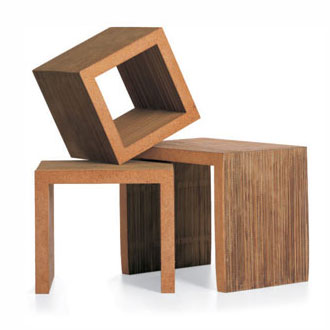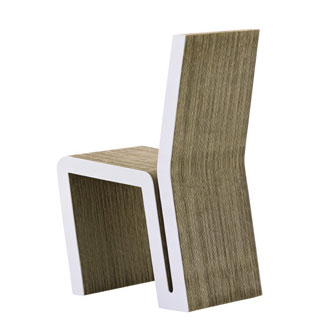BELUX presents CLOUD, the first lamp designed for serial production by master architect Frank O. Gehry. As both a sculptural lamp and a lamp sculpture, CLOUD is a design concept in which the user becomes co-designer. The design is convincing because of its uncommonly poetic and richly associative visual language, its simple construction and its many applications.
Light has always been one of the central themes in the work of the American architect Frank O. Gehry, winner of the Pritzker prize and one of today’s most distinguished designers. From the late 1960s onwards, Gehry has consistently created innovative lighting concepts and designed light objects for his manifold construction projects. Apart from experiments with ‘Colorcore’, a material that inspired the ‘Fish’ and ‘Snake’ lamps that were produced in small editions in the mid-1980s, these were all special designs developed in the context of specific projects. The individually designed, expressive light sculptures made for the conference rooms in the Vitra Center in Birsfelden, Switzerland – which was completed in 1994 – are prime examples.
Co-operating closely with the BELUX company, Frank O. Gehry has, for the first time, designed a collection of lamps for serial production. The name alone – CLOUD – evokes the poetic nature of these creations, which, according to their maker, should convey ‘the feeling of freedom and eccentricity’. The lamps are available in various sizes and models, such as hanging, standing, floor and table lamps. Each lamp has a voluminous yet delicate paper-like shade, in the centre of which is the invisible light source.
With its irregular sculptural shape, marked by countless folds, crimps, bulges and dents, it suggests a fleecy CLOUD and then again a large, soft snowball. Looked at more closely, the lampshade consists of several interlinked cup-like elements. Each lamp has an individual note in spite of all lamps having the same structure and the same predetermined shape. The idea is that the fold structure of the shade, which is shaped more or less by accident during production, can be changed by bulging it out or pressing it in. In doing so, Gehry makes users into co-designers who can repeatedly change the shape of the lamp if they so wish.
Gehry wants CLOUD to be seen as a homage to Isamo Noguchi. CLOUD has the same sculptural quality as Noguchi’s famous paper Akari lamps. Gehry also shares with Noguchi a continued interest in paper, a material he has worked with intensively in his furniture projects. It came as no surprise, therefore, that the first prototype of the new lamp was made of complexly deformed packing paper cups, stapled together.
However, for lighting and safety reasons, an alternative material was needed to produce the lamp in series. After comprehensive tests, a multiply refined polyester material was developed, which feels and looks like strong fibrous paper. Flexible, tear-free, flame-resistant and aging resistant, this material is easy to clean and therefore ideal for CLOUD.
Sheets of this new material are deep-drawn to form cups and then stiffened using a transparent polycarbonate ring. Each lampshade is made up of five, seven, ten or fourteen of these cups, clipped together with plastic clips. After they are assembled, the lampshades are pressed to a thickness of 10 cm for transport, and with a few simple hand movements, users can fold them open into their temporarily definitive shape. The lamp fitting is integrated in a filigree wire structure which also serves as a shade holder. CLOUD’s modular structure allows for the production of customised lamps in addition to the standard sizes for serial production.
Thanks to these materials and the various models that are possible, the CLOUD collection can be put to countless uses. They look attractive in residential settings as well as in public areas such as lobbies, lounges, catering establishments or conference rooms.
Design:
Frank O. Gehry
Manufacturer:
BELUX
Light has always been one of the central themes in the work of the American architect Frank O. Gehry, winner of the Pritzker prize and one of today’s most distinguished designers. From the late 1960s onwards, Gehry has consistently created innovative lighting concepts and designed light objects for his manifold construction projects. Apart from experiments with ‘Colorcore’, a material that inspired the ‘Fish’ and ‘Snake’ lamps that were produced in small editions in the mid-1980s, these were all special designs developed in the context of specific projects. The individually designed, expressive light sculptures made for the conference rooms in the Vitra Center in Birsfelden, Switzerland – which was completed in 1994 – are prime examples.
Co-operating closely with the BELUX company, Frank O. Gehry has, for the first time, designed a collection of lamps for serial production. The name alone – CLOUD – evokes the poetic nature of these creations, which, according to their maker, should convey ‘the feeling of freedom and eccentricity’. The lamps are available in various sizes and models, such as hanging, standing, floor and table lamps. Each lamp has a voluminous yet delicate paper-like shade, in the centre of which is the invisible light source.
With its irregular sculptural shape, marked by countless folds, crimps, bulges and dents, it suggests a fleecy CLOUD and then again a large, soft snowball. Looked at more closely, the lampshade consists of several interlinked cup-like elements. Each lamp has an individual note in spite of all lamps having the same structure and the same predetermined shape. The idea is that the fold structure of the shade, which is shaped more or less by accident during production, can be changed by bulging it out or pressing it in. In doing so, Gehry makes users into co-designers who can repeatedly change the shape of the lamp if they so wish.
Gehry wants CLOUD to be seen as a homage to Isamo Noguchi. CLOUD has the same sculptural quality as Noguchi’s famous paper Akari lamps. Gehry also shares with Noguchi a continued interest in paper, a material he has worked with intensively in his furniture projects. It came as no surprise, therefore, that the first prototype of the new lamp was made of complexly deformed packing paper cups, stapled together.
However, for lighting and safety reasons, an alternative material was needed to produce the lamp in series. After comprehensive tests, a multiply refined polyester material was developed, which feels and looks like strong fibrous paper. Flexible, tear-free, flame-resistant and aging resistant, this material is easy to clean and therefore ideal for CLOUD.
Sheets of this new material are deep-drawn to form cups and then stiffened using a transparent polycarbonate ring. Each lampshade is made up of five, seven, ten or fourteen of these cups, clipped together with plastic clips. After they are assembled, the lampshades are pressed to a thickness of 10 cm for transport, and with a few simple hand movements, users can fold them open into their temporarily definitive shape. The lamp fitting is integrated in a filigree wire structure which also serves as a shade holder. CLOUD’s modular structure allows for the production of customised lamps in addition to the standard sizes for serial production.
Thanks to these materials and the various models that are possible, the CLOUD collection can be put to countless uses. They look attractive in residential settings as well as in public areas such as lobbies, lounges, catering establishments or conference rooms.
Design:
Frank O. Gehry
Manufacturer:
BELUX




























